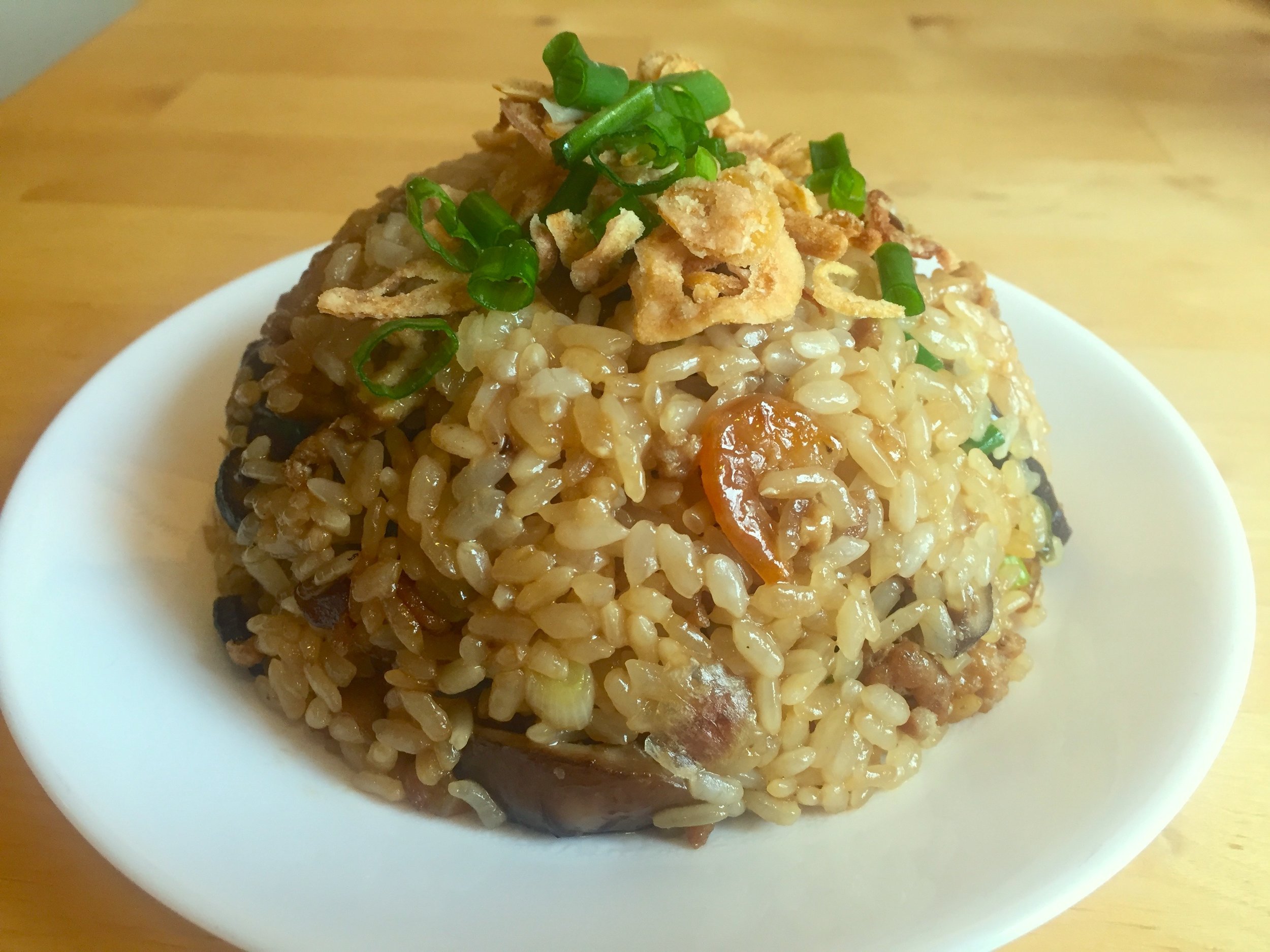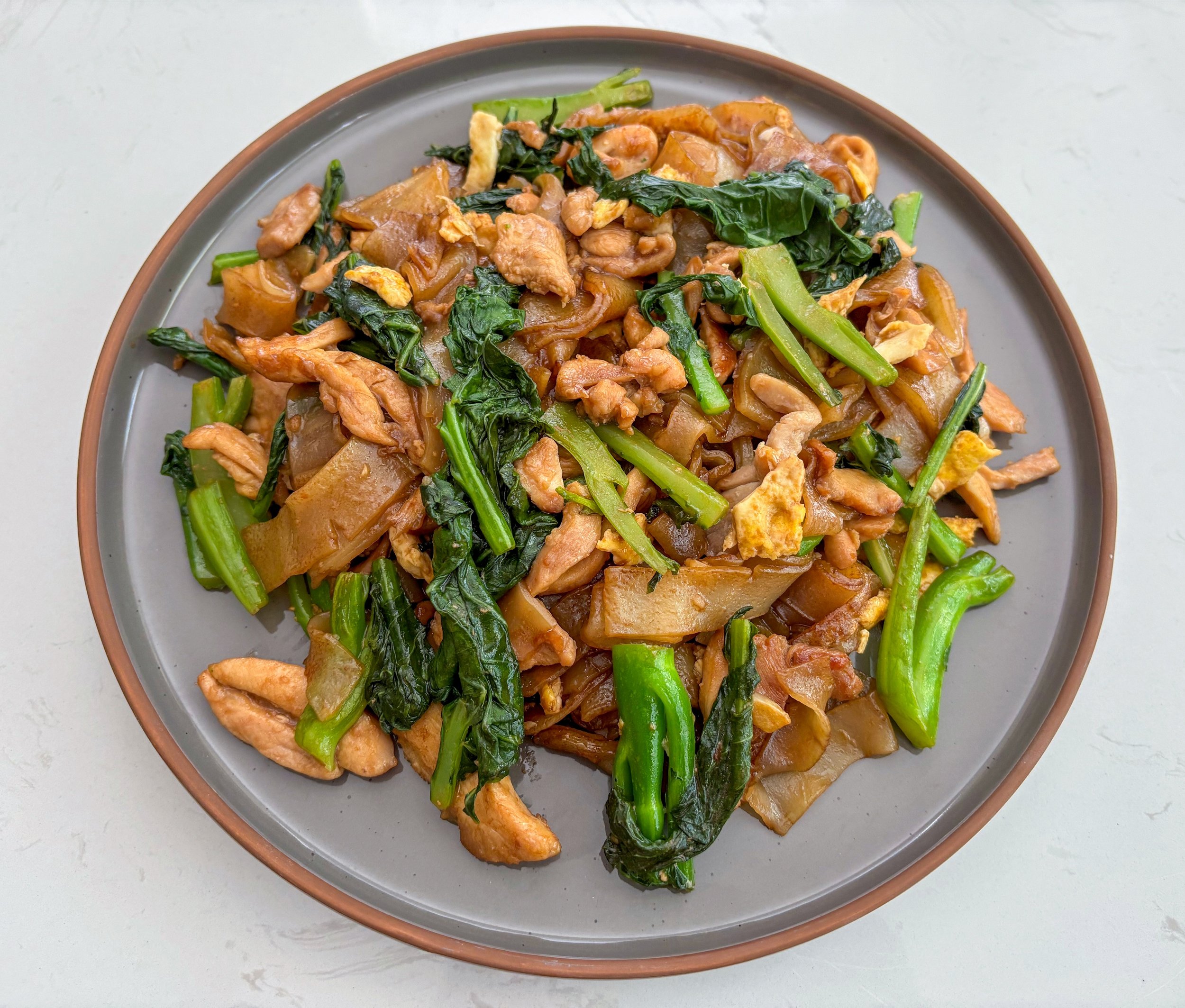Sage and Mushroom Cornbread Dressing

There are countless styles of Thanksgiving dressings in the United States, but they can be broadly classified into two families—a dressing built on cubes of white bread, most popular in the Northern and Mid-Atlantic states, and a dressing built on cornbread, most popular in the American South. Unlike stuffings and dressings made from white bread, cornbread dressing tends to have a very different, soft, spoonable texture.
Corn is perhaps the quintessential American starch, having been domesticated by Native Americans over 7,000 years ago. The arrival of Europeans in America devastated the indigenous population, with an estimated 90% wiped out by European diseases such as smallpox and measles. The few survivors were quickly and violently pushed out of the coastal regions by musket-wielding colonists. The corn they had cultivated, however, quickly became a pillar of the colonial economy. Corn was far cheaper than wheat flour in colonial America, making it the staple which planters purchased to feed their animals—and their slaves.
As with many dishes hailing from the American South, cornbread dressing originated in slavery. In the four centuries from the European discovery of the New World to the international abolition of slavery, over 12 million Africans, predominantly from West and Central Africa, were torn from their native lands and shipped across the Atlantic Ocean to work the plantations of the Americas.
Members of countless ethnic groups, far from home and separated from their comrades, sought to retain their humanity by building a community of their own within the confines of the plantation barracks. Despite the hardships and horrors they faced, African-American slaves managed to build a vibrant culture of their own, weaving together the influences of many different African cultures and adapting them to their new environment. This, of course, included food. American slaves were provided with meager rations, usually consisting of coarse cornmeal. By combining leftover cornbread with garden ingredients such as onions and herbs and cooking these ingredients together, slaves were able to stretch their rations and diversify their diet. This dish was called cush, a corruption of the word “kusha,” a family of West African dishes in which grains were cooked with meat and vegetables[1].
Cornbread dressing exists in many variations, but the fundamentals of the dish have changed little in the centuries since. The dish made its way into the diets of white Southerners, likely introduced to the manors of the planter class by the black slaves and servants who worked the kitchens. In the decades after the Civil War, cornbread dressing was a staple of the Southern poor, a common sight on the tables of both black and white sharecroppers. Cornbread dressing has become assimilated into white Southern society, its origins quickly forgotten. Some historians continue to ascribe the origins of cornbread dressing to the ingenuity of the hungry soldiers of the Confederate Army, who created “Confederate cush”—a narrative which offers no explanation for the name, and conveniently forgets the fact that thousands of blacks were forced to cook and labor for the Confederates[2].
Food is an integral part of any culture, and tells stories about our collective past. When we ignore this history, either intentionally or by omission, we erase the contributions of those who built this country, often against their free will. In the story of cornbread dressing, we catch a glimpse of humanity’s worst instincts—to treat those different from us as inferiors, and to ignore the suffering of others. But it is also a story of tenacity, of adaptation, and survival. And, more hopefully, it is a demonstration of how food can span even the widest of societal divisions. So perhaps it is fitting that a dish born of two displaced and exploited peoples has earned its place at the table for Thanksgiving, the most American of holidays—provided we remember that fact.
The version of cornbread dressing we are preparing today is vegetarian and packed with flavor, featuring to fried mushrooms, caramelized onions, sage and thyme.
Ingredients
12 oz cornbread
12 oz mushrooms, sliced
2 onions, sliced
4 cloves garlic, minced
1 bunch fresh sage
6 sprigs thyme
1 tbsp honey
3 oz butter
2 eggs
1 cup vegetable stock
Salt to taste
Black pepper to taste
Chop the cornbread into 1 inch cubes and spread them out on a tray to stale, for at least 2 hours and ideally overnight. When you’re ready to assemble the dressing, heat 1 oz butter in a pan over low heat, and add the sliced onions to the pan. We want to cook down the onions until they are caramelized, which will add sweetness and an intense depth of flavor to the entire dish. There’s no rushing caramelized onions! Cook, stirring occasionally, until the onions have softened and are deep golden in color. This should take about 30 minutes.
While the onions caramelize, slice the mushrooms, and heat a second pan over medium heat. Add the mushrooms to the dry pan and fry them for about 15 minutes, stirring occasionally, until they are well browned and starting to crisp at the edges. We want to cook as much water as possible out of the mushrooms, to avoid waterlogging the dressing. When the mushrooms and onions are done, remove the two pans from the heat.
In a large mixing bowl, combine the cornbread, mushrooms, caramelized onions, minced garlic, thyme leaves, and the whole sage leaves. If your largest bowl is too small to comfortably hold these ingredients, work in batches instead. Mix the ingredients together, and season to taste with salt and black pepper.
Beat the eggs, and mix the beaten eggs with the vegetable broth and honey. Gradually pour this mixture into the bowl. Depending on how dry your bread is, you may have to add more or less of the egg and broth mixture. Ideally, we want the bread to be saturated with the mixture, with no excess liquid at the bottom of the bowl. Stir until all of the ingredients are well combined. Then pour the dressing mixture into a well-greased baking dish, using clean hands to gently press the dressing into the dish. We are looking for an ideal thickness of about 1½ to 2 inches. Feel free to use other baking dishes or a cast-iron skillet to bake the dressing.
Seal the top of the baking dish with aluminum foil. You can either proceed immediately to baking, or you can store the dressing in the refrigerator for up to 1 day. For a Thanksgiving or Christmas dinner, I recommend doing these steps a day in advance, so on the day of service, you can just throw the premade dressing into the oven.
When you’re ready to bake, preheat the oven to 350° F. Brush the top of the dressing with 2 oz melted butter, which will assist in browning. Then reseal the top of the dish with foil and bake, covered, for 30 minutes, or until warmed through. Then remove the foil and bake for an additional 20 minutes uncovered, to brown the top. Remove from the oven when the dressing is done to your liking, and let rest for 10 minutes prior to service. The rest period is important, as it will allow the bread in the dressing to relax and absorb more of the moisture.
Substitutions
If the cornbread you are using is very sweet, reduce the amount of honey in the recipe. If you are making a non-vegetarian version, you can add chopped ham, bacon, or smoked turkey. If you prefer your dressing to have a more distinct, bready texture, substitute half of the cornbread with a hardier white loaf. Sweet or hot peppers also work well in this dish.
[1] The term “kusha” itself is likely derived from couscous, which originated in North Africa in the 12th century.
[2] To learn more about the origins of cornbread stuffing, read this article by culinary historian Michael Twitty.
Recipe
Prep Time: 10 min Cook Time: 1 hr Total Time: 1 hr 10 min
(+8 hrs inactive) (1 day)
Difficulty: 2/5
Heat Sources: 2 burners, oven
Equipment: 2 pans, baking dish, aluminum foil
Servings: 8
Ingredients
12 oz cornbread
12 oz mushrooms, sliced
2 onions, sliced
4 cloves garlic, minced
1 bunch fresh sage
6 sprigs thyme
1 tbsp honey
3 oz butter
2 eggs
1 cup vegetable stock
Salt to taste
Black pepper to taste
Instructions
1. Chop the cornbread into 1 inch cubes and spread them out on a tray to stale overnight.
2. Heat 1 oz butter in a pan over low heat, and add the sliced onions to the pan. Cook, stirring occasionally, until the onions have caramelized and are deep golden in color, about 30 minutes.
3. Meanwhile, in a dry pan over medium heat, cook the mushrooms for 15 minutes, stirring occasionally, until browned and crisp. Remove from the heat and set aside.
4. In a large mixing bowl, combine the cornbread, mushrooms, caramelized onions, minced garlic, thyme leaves, and the whole sage leaves. Season with salt and black pepper, and toss gently to combine.
5. Beat the eggs, mix them with the vegetable broth and honey, and pour the mixture into the bowl with the other ingredients. Stir until all ingredients are well combined.
6. Pour the dressing mixture into a well-greased baking dish, using clean hands to gently press the dressing into the dish. Seal the top of the baking dish with aluminum foil. Either bake the dressing immediately, or store in the refrigerator for up to 1 day until ready to bake.
7. When ready to bake, preheat the oven to 350° F. Temporarily remove the foil and brush the top of the dressing with 2 oz melted butter. Replace the foil to reseal the top of the dressing.
8. Bake the dressing, covered, for 30 minutes or until warmed through. Then remove the foil and bake for an additional 20 minutes uncovered to crisp the top. Remove from the oven and let rest for 10 minutes before serving.














